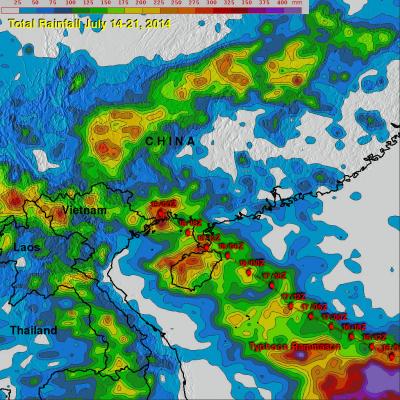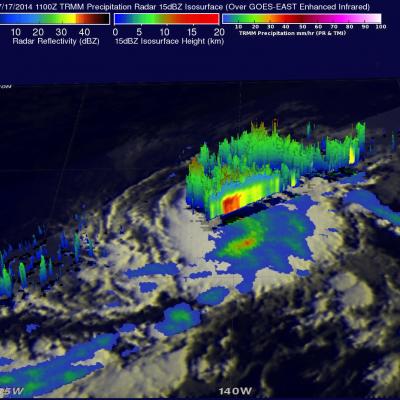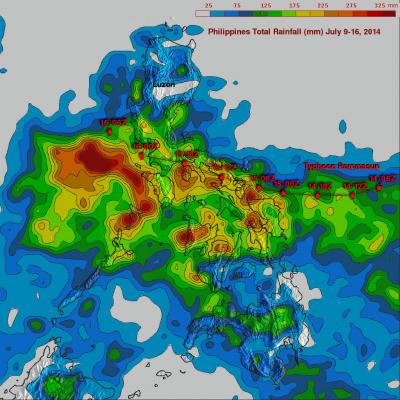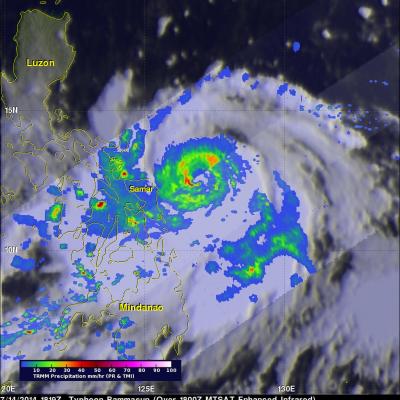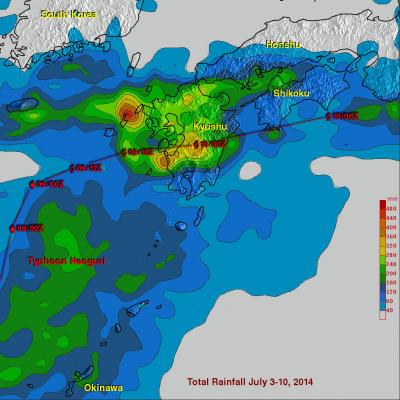Super Typhoon Rammasun Strikes the Southern Coast of China
Super typhoon Rammasun struck the southern coast of China on Friday July 18th as a very powerful super typhoon with sustained winds estimated at 135 knots (~155 mph or equivalent to a Category 5 hurricane on the US Saffir-Simpson scale), making it the strongest typhoon to hit the area in several decades. Rammasun made landfall at 3:30 pm (local time) on Hainan Island where the southern half of the intense eye wall raked across the northeast tip of that island. The center then quickly cut across the Qiongzhou Strait separating Hainan from the Leizhou Peninsula to the north. The right half of


